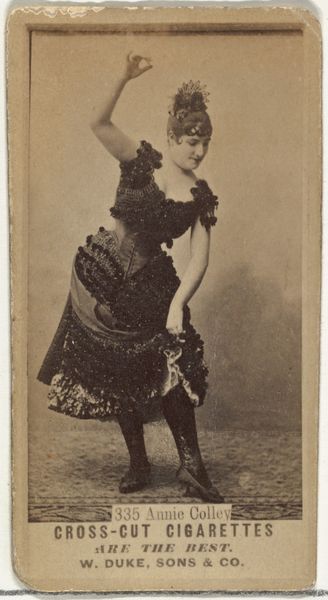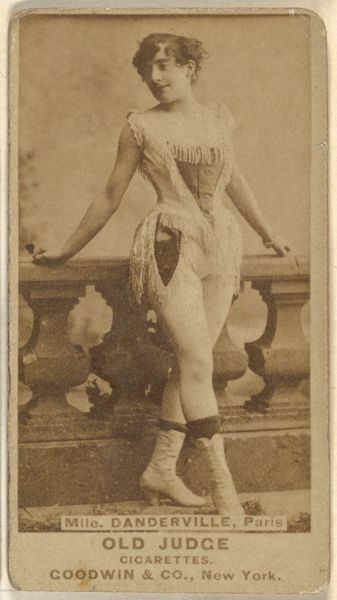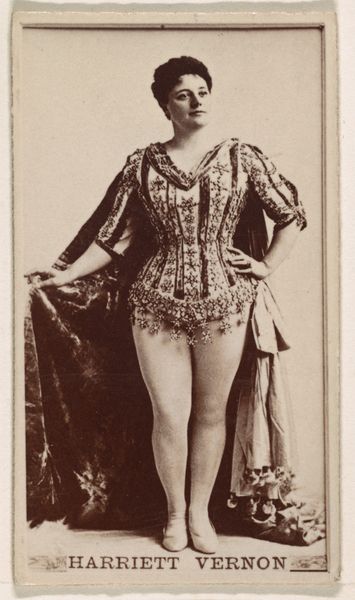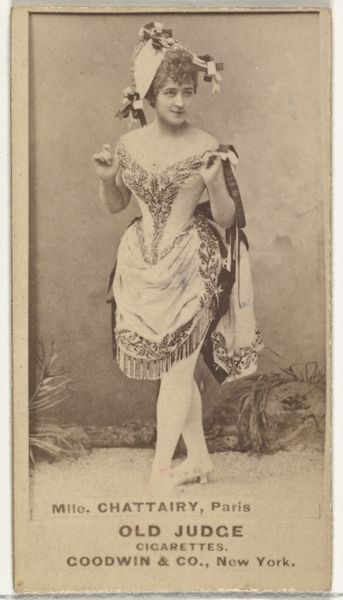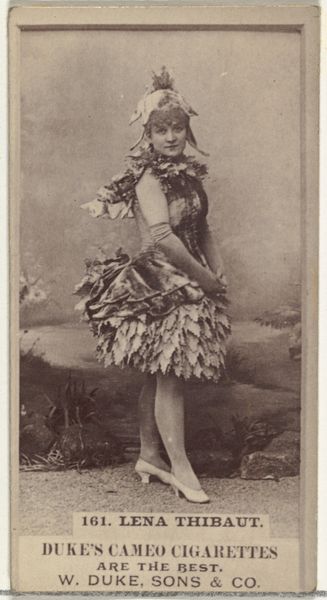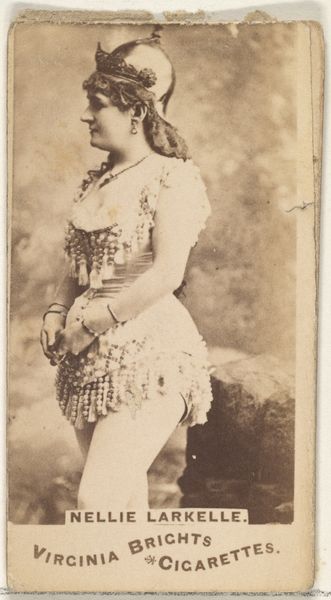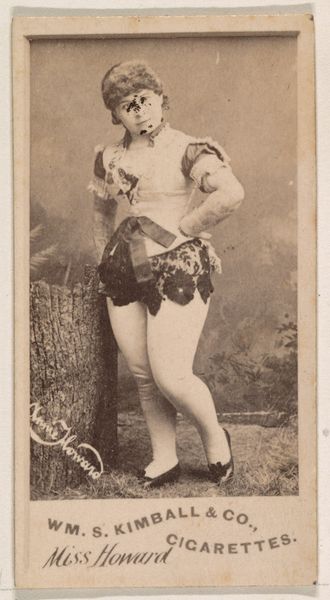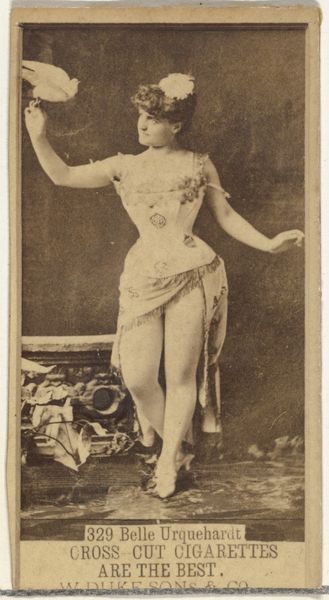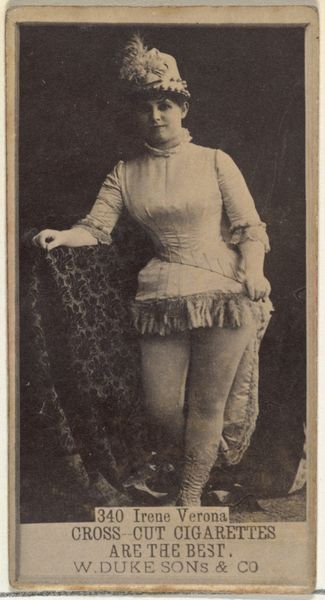
Seven Ravens, from the Actors and Actresses series (N171) for Old Judge Cigarettes 1886 - 1890
0:00
0:00
drawing, print, photography
#
portrait
#
drawing
# print
#
figuration
#
photography
#
19th century
Dimensions: sheet: 2 11/16 x 1 3/8 in. (6.9 x 3.5 cm)
Copyright: Public Domain
Editor: This is a print entitled "Seven Ravens," made between 1886 and 1890 by Goodwin & Company. It's part of a series of photographs used for Old Judge Cigarettes. The photograph depicts a woman in costume, and there’s something both theatrical and slightly unsettling about her gaze. How do you interpret this work? Curator: The photograph immediately evokes questions about representation and commodification in the late 19th century. What stories were these cigarette cards telling, and how did they participate in shaping public perceptions of women, especially women performers? Consider the performative aspect; it is critical. She's a spectacle designed to sell cigarettes, an objectification rooted in the patriarchal gaze. Does this change the narrative for you? Editor: Definitely. Thinking about the cigarette card format, it emphasizes disposability, and links that with how this performer is also seemingly disposable. I didn’t catch that connection immediately. Curator: Exactly. Furthermore, we need to think about the name “Seven Ravens”. What mythologies, what folklore, are these photographs appropriating? Were there associations with darkness or mystery that gave them cultural significance? Cigarette cards were incredibly popular, serving as vehicles for spreading ideals, biases, and commercial ambitions, particularly as visual components of capitalist strategies to expand a consumer base through imagery laden with constructed or reinforced ideologies of the day. Editor: So, it's about understanding the broader implications of commercial imagery, power dynamics, and the representation of women during that era. I never considered how loaded something seemingly innocuous like a cigarette card could be. Curator: Precisely! Recognizing these complexities enriches our understanding, opening new avenues of exploration. Now you’ve taken the first steps in challenging historical conventions to consider wider societal perspectives and interpretations through theory and history.
Comments
No comments
Be the first to comment and join the conversation on the ultimate creative platform.
